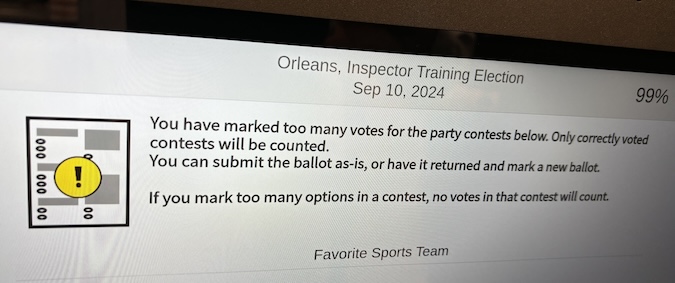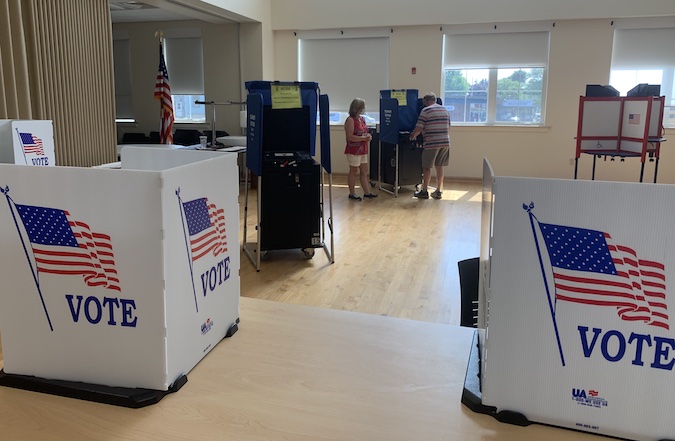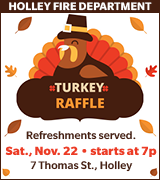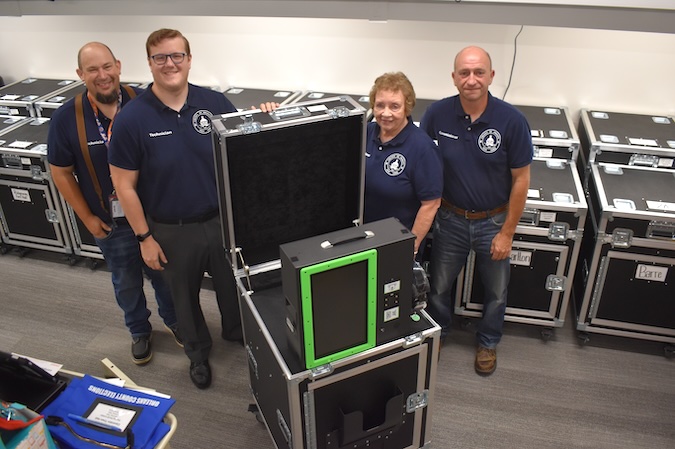28 new voting machines ready for upcoming election
ALBION – Orleans County will be debuting new voting machines in the upcoming presidential election.
The new optical-scan machines will be better able to detect markings on the ballot. Voters will be able to use a ballpoint pen, instead of a marker, said Mike Mele, one of the county’s election commissioners.
The machines will also be equipped with technology for people to vote who are blind or hard of hearing. There are 15 new machines for people without disabilities and 13 with technology to assist people with disabilities, including braille, headphones for people to hear the ballot read to them, and “sip and puff” device technology for people who are quadriplegics.
The county purchased the current optical-scan machines in 2009, replacing the old mechanical lever machines, technology that had been used for about a century.
When the county made the switch to the optical scan machines, they were expected to last about a decade, said Janice Grabowski, the county’ election commissioner. The county used them for about five additional years beyond the initial expectation.

The machines have been tested out as part of training for elections inspectors. This question asks, “What is your favorite sports team?” The ballot was flagged because there were two answers on the ballot. The voter will be given the option of a new ballot or that line won’t be counted if that happens in the actual election.
The County Legislature in March authorized spending $238,972.50 for the new machines from Clear Ballot Group of Boston, MA. The new machines are compatible with the Election Management System used by the county.
The Board of Elections has set aside money in its budget in recent years towards the replacement cost of the machines, Grabowski said. The county also is using $5,607 in HAVA (Help America Vote Act) grant monies and $11,878 in TIER (Technology Innovation and Elections Resource) grant funds towards the purchase, leaving the remaining $221,487 as the county cost.
There are 11 polling sites in the county and each site will have a regular voting machine and one for people with disabilities. The BOE also will have six more in case there are any breakdowns with the 22 at the voting sites.
The machines are much faster to program with the ballots for the county’s voting technicians, about 6 hours per voting district compared to 12-14 hours before. Voting technicians Scott Bennett and Kevin Urbanik said that programming time should be reduced further as they become more experienced with the software.

File photo by Tom Rivers: A voter casts a ballot at Hoag Library on June 23, 2020 on one of the voting machines that has been replaced after about 15 years.
The county also will be introducing ballots on demand which Mele said will significantly reduce the costs of printing ballots. The county has been printed 110 percent of the ballots for about 25,000 registered voters. Those ballots are 48 to 56 cents each.
With print on demand, the ballot cost is about 20 cents each and the county only needs t print what is needed.
The upcoming election will have another change: people will sign in to vote on an iPad rather than the printed election books with the roll of registered voters. That also means people don’t have to go to their specifics voting district to sign in because the iPad will have all the names of registered voters in that town.
That is allowing the county to reduce the total number of election inspectors from 104 to about 70. The election inspectors are paid $260 for working elections, on days that start at 5:30 a.m. and go until past 9 p.m.
The county will continue to have inspectors from both the Republican and Democratic parties. Mele and Grabowski also stressed the county’s voting machines are not hooked into the internet and there is no chance for any outside interference.




































































